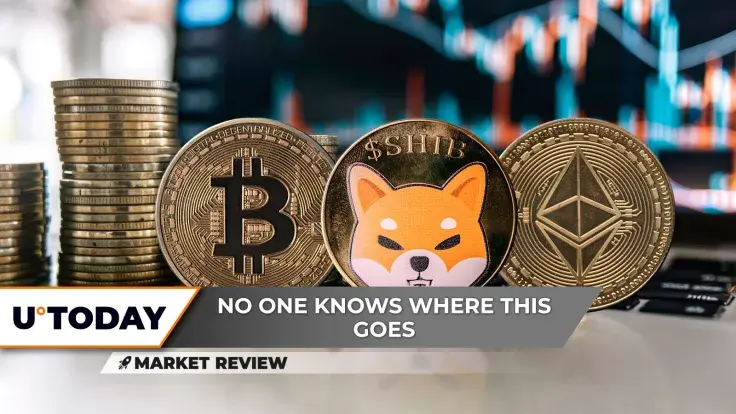The following is a guest post and opinion of Eneko Knörr, CEO and Co-Founder of Stabolut.
Months ago, in an op-ed for CryptoSlate, I warned that the EU’s flagship crypto regulation, MiCA, would achieve the opposite of its goals. I argued it would strangle euro innovation while cementing the US dollar’s dominance for a new generation.
At the time, some thought this was alarmist. Today, with grim validation, the same concerns are being echoed from within the European Central Bank itself. In a recent blog post, also highlighted by the Financial Times, ECB advisor Jürgen Schaaf described the state of the euro-denominated stablecoin market as “dismal” and warned that Europe risks being “steamrollered” by dollar-based competitors.
This warning comes at a critical time. In the traditional global economy, non-USD currencies are the lifeblood of commerce. They account for 73% of global GDP, 53% of SWIFT transactions, and 42% of central bank reserves. Yet, in the burgeoning digital economy, these same currencies are nearly invisible. The world’s second most important currency, the euro, has been reduced to a digital rounding error.
By the Numbers: A Digital Chasm
The data reveals a startling disconnect. While privately issued, dollar-denominated stablecoins command a market capitalization approaching $300 billion, their euro-denominated counterparts struggle to reach $450 million, according to data from CoinGecko. That’s a market share of just 0.15%.
This isn’t a gap; it’s a chasm. It means that for every €1 of value transacted on a blockchain, there are nearly €700 in US dollars. This dollarization of the digital world presents a profound strategic risk to Europe’s monetary sovereignty and economic competitiveness.
MiCA’s Billion-Euro Handbrake
The EU’s landmark Markets in Crypto-Assets (MiCA) regulation was intended to create clarity, but in its ambition to control risk, it has inadvertently built a cage. While its framework for E-Money Tokens (EMTs) provides a path to regulation, it contains a poison pill for any euro stablecoin with global ambitions.
The single biggest limitation is the €200 million cap on daily transactions for any EMT deemed “significant,” as detailed in the official MiCA text. This isn’t an accident or a simple oversight; it’s a feature designed to ensure no private euro stablecoin can ever truly succeed.
For context, the leading dollar stablecoin, Tether (USDT), regularly processes over $50 billion in daily volume. A €200 million cap isn’t a safety measure; it’s a declaration of non-ambition that makes it mathematically impossible for a euro stablecoin to function at the scale required for international trade or decentralized finance.
The Crypto Investor Blueprint: A 5-Day Course On Bagholding, Insider Front-Runs, and Missing Alpha
The motivation seems clear: policymakers are intentionally sabotaging the private sector to clear the field for their own project—the Digital Euro.
The Digital Euro: A Threat to Citizen Privacy?
By stifling private innovation, the EU is placing all its bets on a state-controlled Central Bank Digital Currency (CBDC). This is not only a slow, centralized answer to a fast-moving, decentralized market, but it also poses a fundamental threat to the privacy of European citizens.
Physical cash offers anonymity. A transaction with a €5 note is private, peer-to-peer, and leaves no data trail. A CBDC is the opposite. It would move all transactions onto a centralized digital ledger, creating a system of granular surveillance. It gives the state the potential power to monitor, track, and even control how every citizen uses their own money. Building the euro’s future on this foundation means swapping the freedom of the wallet for a transparent digital piggy bank—a trade-off most citizens would rightly refuse.
The Global Race Europe Is Ignoring
While Brussels focuses on building its walled garden, other major economic powers have recognized the strategic importance of privately issued stablecoins. They see them not as a threat but as a vital tool for projecting monetary influence in the digital age.
Even China is reportedly exploring the role a CNY-backed stablecoin could play in internationalizing the yuan. In Japan, regulators have already passed a landmark stablecoin bill, creating clear pathways for the issuance of yen-backed stablecoins. These nations understand that the digital currency war will be won by empowering private innovation, not by centralizing control. Europe’s current path makes it a spectator in a race it should be leading.
A Policy Playbook for the Euro
If the euro is to compete, Brussels must execute a radical policy U-turn. The goal shouldn’t be to contain stablecoins but to make the EU the premier global hub for issuing them. This requires a clear-eyed strategy that recognizes private innovation will always outpace centralized solutions.
Here is a playbook for how Europe can win:
- Uncap the Future: Remove the crippling €200 million transaction cap entirely. The market, not regulators, should determine the scale of a successful project. Let euro stablecoins grow ad infinitum and compete on a global stage without artificial ceilings.
- Fast-Track Licensing: Establish a pan-European fast-track authorization process for qualified EMT issuers to reduce time-to-market and encourage a vibrant, competitive ecosystem.
- Follow the US Model—Cancel the CBDC: The United States has gained its advantage by prioritizing regulatory clarity for private issuers while effectively shelving its own retail CBDC plans. Europe must do the same. Formally cancel the Digital Euro project, acknowledge the fundamental privacy risks it poses, and recognize that the single best strategy to grow the euro’s international influence is to fully support a thriving, privately issued stablecoin market.
The choice is stark: Europe can continue down its path of self-imposed digital irrelevance, or it can unleash its innovators to build the future of finance. Right now, that future is being built almost entirely with American digital dollars, and time is running out to change that.
Source: https://cryptoslate.com/euro-stablecoins-are-0-15-of-the-market-heres-how-europe-catches-up/


